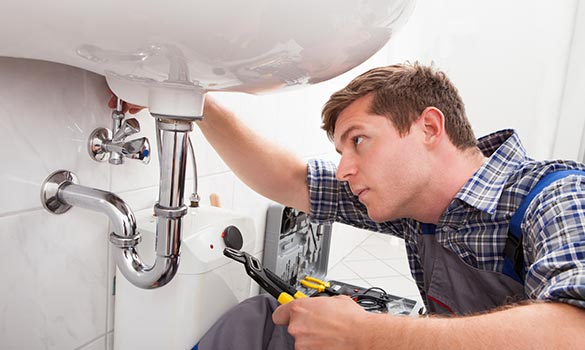Index Surge: Amplifying Your Insights
Stay updated with the latest trends and news across various industries.
Plumbing Nightmares and How to Fix Them
Discover shocking plumbing disasters and expert tips to fix them fast! Don’t let leaks and clogs ruin your day—learn how to tackle nightmares now!
Top 5 Plumbing Nightmares and How to Avoid Them
When it comes to household issues, few things can be as stressful as plumbing nightmares. From sudden leaks to complete system failures, these situations can lead to costly repairs and significant damage. To keep your home safe, it's essential to be aware of the top plumbing nightmares that homeowners face. Here are five of the most common plumbing catastrophes:
- Clogged Drains
- Leaky Pipes
- Running Toilets
- Water Heater Failures
- Tree Root Intrusions
Each of these problems can escalate quickly if not addressed promptly. To avoid them, regular maintenance is key. Here are a few tips to help you steer clear of plumbing disasters:
- Schedule routine inspections with a licensed plumber.
- Be cautious about what you flush or pour down the drain.
- Insulate your pipes to prevent freezing.
- Keep an eye on your water bill for sudden increases.
- Know the location of your main water shut-off valve.

How to Identify and Resolve Common Plumbing Disasters
Identifying plumbing disasters early can save you time, money, and major headaches. Common signs of a plumbing issue include leaks, unusual smells, and slow drainage. For instance, if you notice water stains on your ceiling or walls, it's a clear indication that a leak might be present. Other indications include gurgling sounds from the drains and a sudden increase in your water bill. Ignoring these signs could lead to more severe problems, including major water damage or mold growth, which can be challenging and expensive to resolve.
Once you've identified a plumbing disaster, the next step is to alert a professional plumber or take action yourself if you feel comfortable. Start by shutting off the main water supply to prevent further damage. For minor issues such as clogged drains, you might try using a plunger or a drain snake. If you encounter persistent problems like severe leaks or backed-up toilets, it's best to contact a local plumbing expert who can accurately diagnose and efficiently resolve the issue. Remember, timely intervention is key to preventing more significant disasters down the line.
What to Do When You Encounter a Plumbing Emergency?
Encountering a plumbing emergency can be a stressful experience, but staying calm is essential. The first step is to identify the source of the issue, such as a burst pipe or a severe leak. Once located, shutting off the water supply to your home can prevent further damage. Most homes have a main shut-off valve typically located near the water meter. If you're unable to locate it, check your property plans or consult an expert. After cutting off the water supply, assess the situation to determine if it's something you can fix temporarily, such as using a wet/dry vacuum to remove standing water or applying duct tape to a minor leak.
If the problem persists or if it’s beyond your ability to manage, it’s crucial to call a professional plumber. Search for local plumbing services that offer 24/7 emergency assistance, as quick action can significantly reduce the extent of damage. While waiting for the plumber, make sure to protect your belongings from water exposure by moving items out of the way or covering them with plastic sheeting. In addition, document the damage with photos for insurance purposes, and keep a record of any actions you've taken before the plumber arrives to share with them for a more efficient resolution.